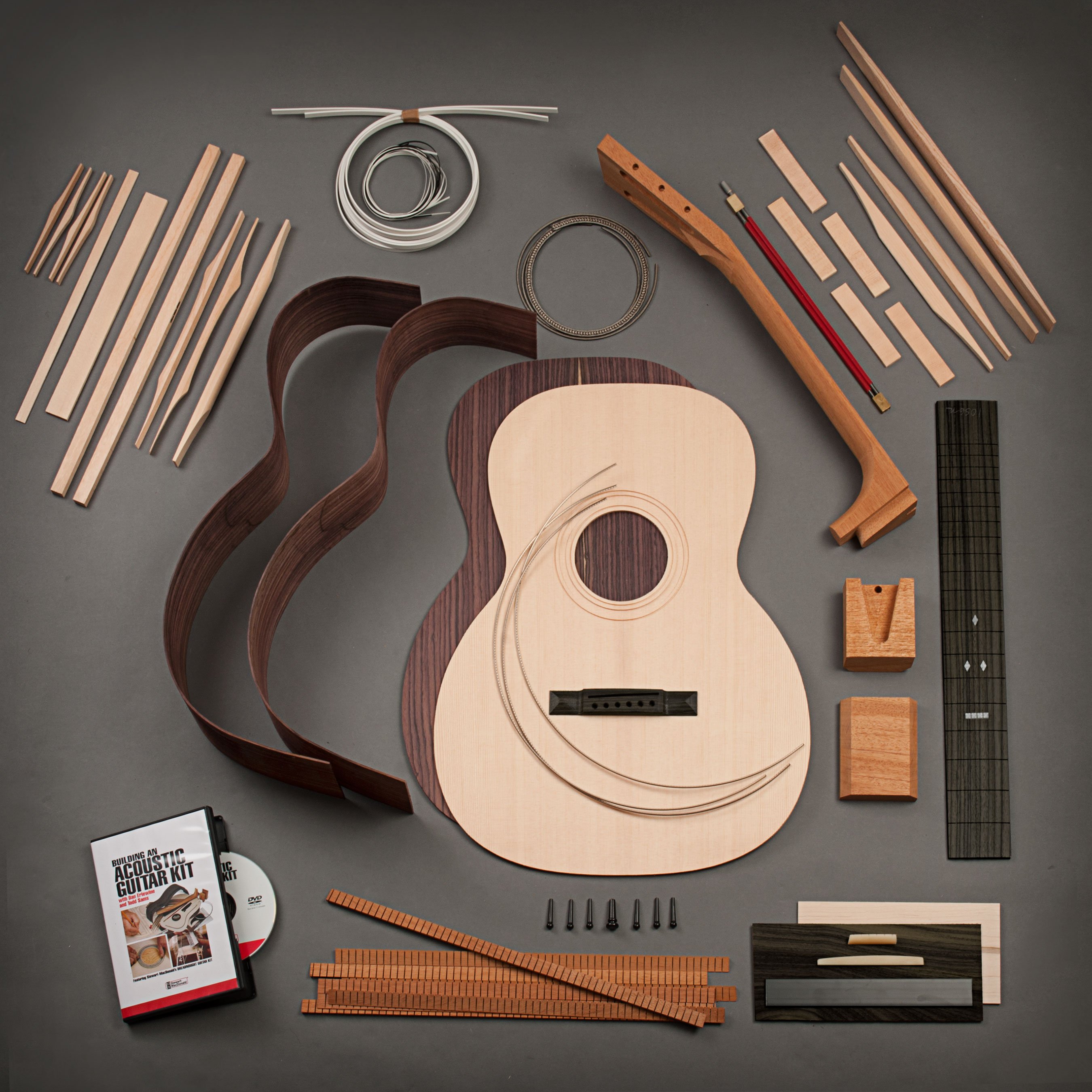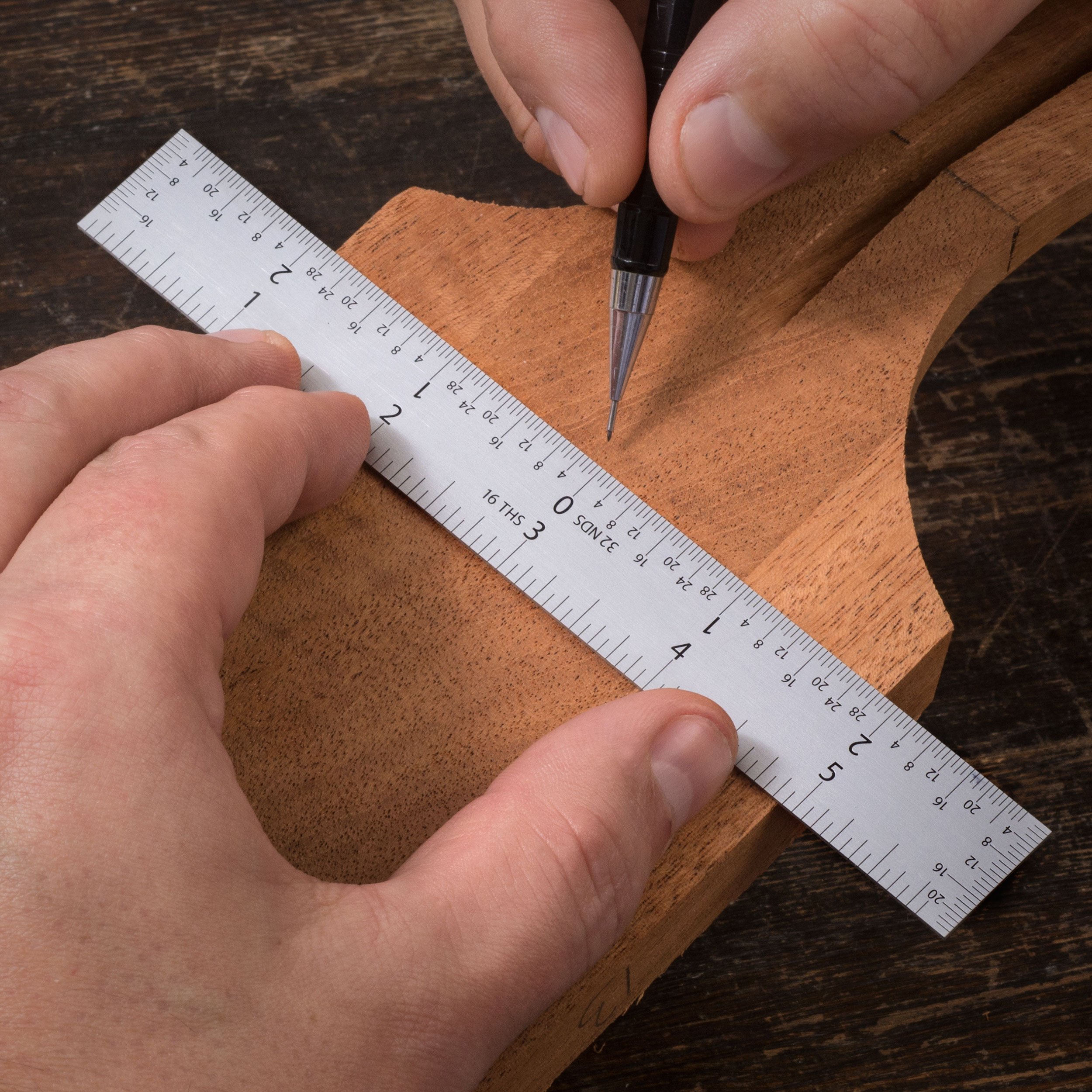Fixing the angle of an acoustic neck joint
Issue 283 April 06, 2017
Your first guitar build has a slightly crooked neck! What do you do? Dan Erlewine shows how to recognize and solve this problem.
About the guitar in this video: This Triple-O Guitar Kit is the first-ever build by Joe Etgen, Customer Service Representative at StewMac!
- Identifying the problem using a straightedge.
- Measuring with feeler gauges.
- Where and how to remove wood.
- Determining the bridge location.
Video Transcription
[on-screen text reads: Dan Erlewine - Guitar Repairman, Author]
Dan Erlewine: One of our customer service reps in the phone room, Joe Atkin built this Triple-O Kit and he is done a killer job of seeing it, prepping it. The neck's all shaped. He's ready to put the neck on before he finishes and get all that fitting done and he has a problem.
Identifying the problem using a straightedge
When he built this he put the neck block in a little crooked. It's out of square at the body. This is where the bridge will sit. We've measured that out. You run the straightedge down the frets and it should be touching the top of the bridge, but it's not, it's way off. I'm guessing 3/8 of an inch [on-screen text reads: StewMac Luthier's Square - stewmac.com]. No, 5/16. So to correct this, we have to tip the neck back this direction. It's overset that way.
Measuring with feeler gauges
With the neck off, you can see how much out of square this is. You won't even notice it in the final product. It'll be a killer guitar. We just have to correct it. And to do that, we're going to take wood off at the top of the heel, which will let the neck tip back. Since this is a bolt-on neck, I can take and loosen the bolts. I've got the bolts loose so that I can jiggle this neck around now enough to slide some Feeler Gauges right at the bottom of the heel to kick it out. Now I can tighten them first at the top very carefully until it pulls that in. And then my first check, let's see what I have now.
Now it's sitting too low, so I've got too many feeler gauges. I can work that out, dial it in, until the straight edge sits right to the top of the bridge. It looks like we're off about 5/64ths of an inch [on-screen text reads: StewMac Shop Rule - stewmac.com]. So we transfer that to the top of the heel because that's where the wood's going to come off since this neck was overset.
Where and how to remove wood
Let's say that's the amount he has to take off up to that edge of that tape [on-screen text reads: Low Tack Protective Tape - stewmac.com]. To get there he's going to chisel a lot more wood off here than he is at the very outside of the cheeks. He's going to undercut that [on-screen text reads: Two Cherries Wood Chisel - stewmac.com]. In order to get to that edge, you're going to take more wood off down lower in here. As you relieve this wood then it's easier to cut that wood. So you take a lot off here and a little bit there. You want the last stroke, so be just shaving the finest hair of wood off.
Well, Joe's back to the phone room now and he's left me to check his work. Good job Joe, it's right on the top of the bridge. Before this fretboard was way up in the air because the neck was set too far back. Now it's almost touching the top. Glued down it'll have a little bit of fall away, so you won't have buzzy frets up there. The cheeks are tight to the body. It's a real smooth, tight fit there.
One other thing is, since we moved the neck this way, this frets gone back about a 16th of an inch. He'll have to move this bridge a little further back so this saddle's in the right place. Otherwise, this guitar is built, fit, ready to be taken apart and finished.







